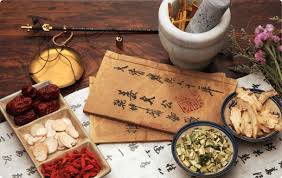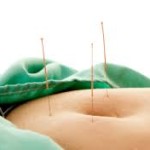 Traditional Chinese medicine has been practiced since 1200 B.C. The foundational principles of Chinese medicine are not necessarily uniform across one school of thought or religion. Ancient writings show that traditional Chinese medicine has been influenced by Taoism, Buddhism and neo-Confucianism.
Traditional Chinese medicine has been practiced since 1200 B.C. The foundational principles of Chinese medicine are not necessarily uniform across one school of thought or religion. Ancient writings show that traditional Chinese medicine has been influenced by Taoism, Buddhism and neo-Confucianism.
Chinese medicine, like other sciences, defines data on the basis of inductive and synthetic cognition. This means that practitioners look at a logical link between two effective positions existing at the same time in different places. The other side of the coin is causality where the logical link between two effective positions at different times in the same place in space. In other words, if something happens in separate areas yet simultaneously in time they are mutually inductive.
Traditional Chinese medicine continues to operate under these theories. However, present-day Western medicine has persisted in the habit of making causal connections first and finding inductive links later. The difference in the way in which medicine is approached is considered the biggest obstacle to an appreciation of science and medicine by either side.
Traditional Chinese medicine is based on the philosophical concepts that the human body is in and of itself a small universe. This universe has a set of complete and sophisticated interconnected systems and those systems must work in balance to maintain a healthy function. The Chinese call this balance of Yin and Yang to be in respect to Qi. Qi is the breath, or life force, of the human body.
Traditional Chinese medicine uses a very unique model of the body. This model includes delineation of Meridian systems which divide the physical body into functions. While Western anatomical model looks at parts of the body, Chinese medicine is more concerned with function. Therefore, the spleen is not just a piece of tissue which filters the blood but rather related to transportation within the body and of mental functioning.
And, just as there are differences in medical specialties within traditional Western medicine, there are significant regional and philosophical differences between practitioners of traditional Chinese medicine. These differences can lead to variations in practice and theory.
Some of the more common theory is used to describe the human body and its function in Chinese medicine are channels, Qi, Wu Xing, three jiaos, Yin and Yang and Zang and Fu. A discussion of the differences between these theories is well beyond the scope of our discussion here. Suffice it to say there are several different theories which are responsible for the treatment recommendations and protocols which traditional Chinese medicine specialists use in their practices.
Interestingly, there are also separate models that are used to apply to specific pathological influences on the body. So, not only are theories responsible for the differences in treatment protocols but also has an influence on the way in which pathological changes to the body are interpreted.
Coming out of these specific series of medicine, Chinese practitioners have introduced acupuncture, acupressure and the use of herbal medications into the Western world. With the push towards greater prevention and alternative health care practices, these alternative methods have been well received in based on the hundreds of years of successful use.
Resources:
Traditional Chinese Medicine Basics: The Five Elements Theory
http://www.tcmbasics.com/basics_5elements.htm
National Center for Complementary and Alternative Medicine: Traditional Chinese Medicine
http://nccam.nih.gov/health/whatiscam/chinesemed.htm
The Journal of Chinese Medicine: Osteoarthritis and Chinese Medicine
http://www.jcm.co.uk/product/catalog/product/view/10487/osteoarthritis-and-chinese-medicine-an-overview-of-theories-and-evidence/
Edinburgh Natural Health Centre: The Theory of Chinese Medicine
http://www.enhc.co.uk/chinese/theory.htm
Science Based Medicine: What is Traditional Chinese medicine
http://www.sciencebasedmedicine.org/index.php/what-is-traditional-chinese-medicine/
China.Org.CN: Philosophical Basis of Traditional Chinese Medicine
http://www.china.org.cn/english/MATERIAL/185381.htm


Leave a Reply